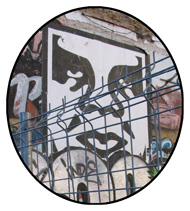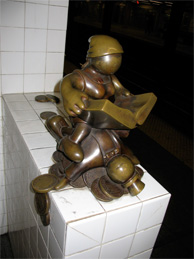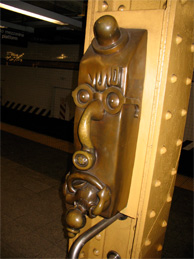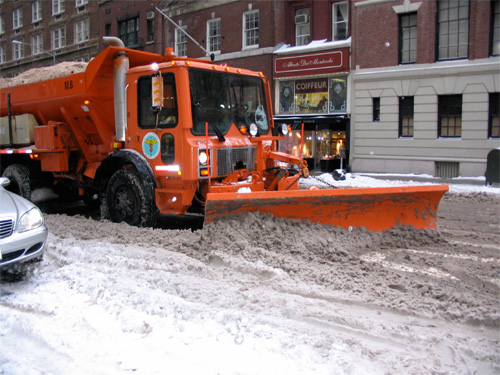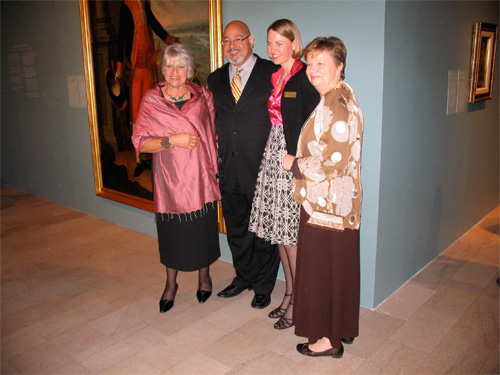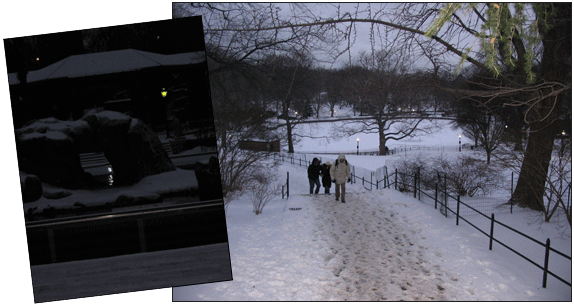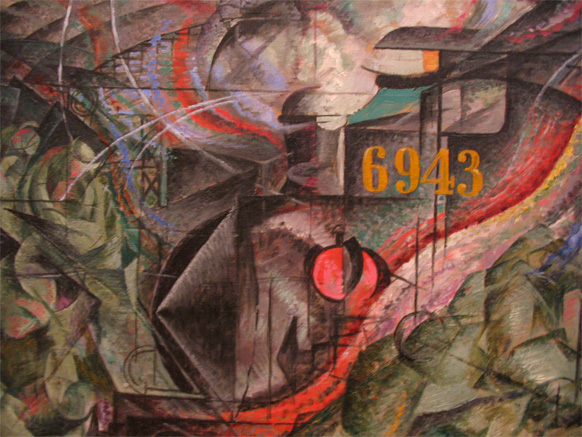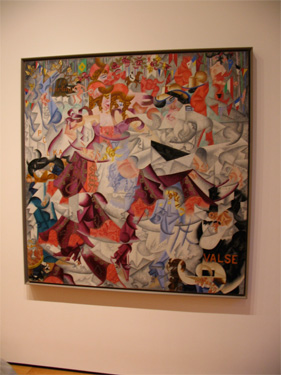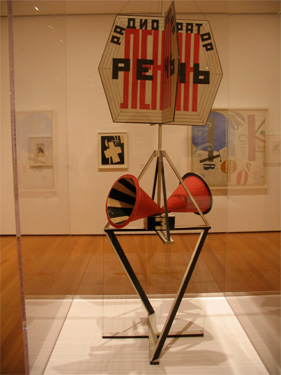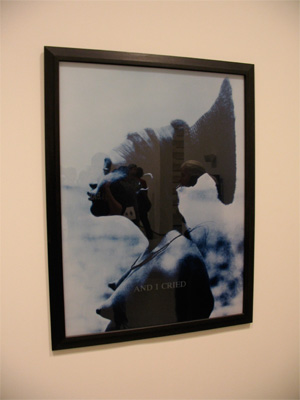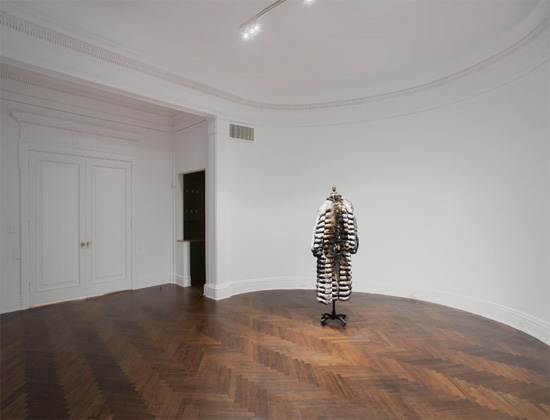|

Big and Bouncy
Why are we in a New York state of mind? Well, your peripatetic Rotund crew just returned to the sunny isle after several harrowing days in blizzard conditions on the wintry East Coast. There was, as usual, too much whale blubber, baffling interchanges with the buttoned-up natives, lots of snowcapped tall buildings, and more art than you can shake a mukluk at. We hope our boricua friends who are shipping off to Scope New York are taking their woolens—does anyone in Puerto Rico actually own a woolen?—and a big cask of Barrilito Three Star. Our mission in la Manzana Grande was very hush-hush, but we’ll whisper it to you: we were there for the opening of Mi Puerto Rico at the Newark Museum, an exhibition of eighteenth-, nineteenth-, and twentieth-century paintings by Puerto Rican masters, co-curated by Marimar Benítez, art historian and director of San Juan’s Escuela de Artes Plásticas, and Museo de Arte de Ponce head curator Cheryl Hartup. We’re prevented by journalistic ethics from discussing the matter—Hartup is well-connected at Rotund World—so please pretend that you never read this here or saw the photograph below, taken at the opening ceremonies. From left to right: Benítez, Newark city councilman Carlos M González, Hartup, and Newark Museum director Mary Sue Sweeney Price, standing nearby José Campeche’s oil-on-canvas portrait of Governor Ramón de Castro, from 1800. Someone said that over 1,000 people came to the opening, and who are we to argue? Mi Puerto Rico comes to Museo de Arte de Ponce this spring.
As far as we can determine, furry aquatic mammals do not present a conflict of interest under most circumstances. Lurking in the scene to the left below is perhaps the last remaining seal in the Central Park Zoo, everyone else having had the sense to migrate to Miami. Watch the center of the photograph long enough, and the seal will appear in the rocky niche and bark forlornly. Not far from the whiskery beast’s frosty lair, intrepid Manhattanites traipse happily through the snowy twilight. We were likewise delighted at the park’s eerie calm, no maniacal yellow taxis for once, no roughneck bicyclists and roller bladers speeding amidst the knolls and hillocks.
We dug deep in our pockets, fingering through key rings, coins, and lint balls to find our expired press passes which we tried to fob off at various museums. For the most part we were bien exitoso, faking our way into the Cooper-Hewitt National Design Museum for the well-stuffed National Design Triennial, crashing the Guggenheim Museum to see the dubiously argued but still satisfying El Greco to Picasso: Time, Truth, and Memory, and visiting the Museum of Modern Art for the first time since its famous retooling. We have read much pissing and moaning about the reinstallation of the museum’s permanent collection; mostly low-grade caviling about how “this is not the place I came of age in.” We found the new arrangement easy to like; two orderly, crowd-pleasing floors of greatest hits, and what’s wrong with that? Instead of cantankerous, self-pitying bellyaching, the pointy-heads should graciously make way for the easily entertained, among whom we proudly count ourselves. As Richard M Nixon, arch war-criminal and renowned philistine, so aptly put it on presenting the Senate with yet another laughably unqualified Supreme Court nominee—was it the odious Clement Haynsworth or the disgraced G. Harrold Carswell?—“The mediocre need representation, too.” Not that we saw all that much of MOMA’s vast array. We dawdled in the refrescante early years of the twentieth century, swept up by such juicy bits as Umberto Buccioni’s 1911 triptych States of Mind I-III—the detail below is from the first painting, The Farewell— and we were floored by the resemblance between futurist Gino Severini’s 1912 Dynamic Hieroglyph of Bal Tabarin, below to the left, and the recent work of our own Rigoberto Quintana, an artist very much of the here and now. We made it as far as the mid-twenties —the image below to the right is the cardboard, paper, wood, thread, and metal brads Maquette for Radio Announcer by Russian constructivist Gustav Klucis, from 1922—before we pooped out on the historical stuff.
Before we straggled out the door, we paid a visit to the retrospective of sun-drenched, doll-filled paintings by Armando Reverón, and looked in on MOMA’s survey of its contemporary holdings, Out of Time: A Contemporary View. Here we found a serving of the ridiculous, like the reliably bad Martin Creed who shows us his two modes, on and off, with Work No. 227, 2007, an empty gallery which is lit, and then not lit. On the more satisfying end of the spectrum, Gerhard Richter is an artist of seemingly limitless range, a connoisseur of a muzzy photo-realism and also a big-gesture abstract painter. His lifelike black and white paintings at MOMA, a series titled October 18, 1977, deal, in part, with the mysterious fate of a group of 1970s German radicals, Red Army Faction, otherwise known as the Baader-Meinhoff Gang. The works are as immediate and strange as news reports about huge, ungraspable events, and they also explore an equally ambiguous aesthetic territory, the nexus between painting and photography. Richter is, in our estimation, as complete as they come.
In fact, we found quite a bit to like in Out of Time, some of it tart and rich in socio-political nutrients rather than starchy. There is the chilling 1997 four-screen video installation Stasi City by Jane and Louise Wilson, a convincing evocation of the former East Germany’s consummately bureaucratic, bunker psychopathology, and a series of archival photographs with original text by Carrie Mae Weems, From Here I Saw What Happened and I Cried, 1995. With this series—as always—Weems mines social history, art history, psychology, and popular culture to create a poetic discourse about our national obsession with race. She is a keen-eyed social anthropologist and critic with a particularly lyrical way of putting things. The image above is the final part of a series of chromogenic color prints with sand- blasted text on glass. It measures 42" x 31". 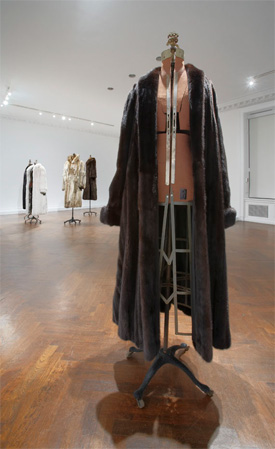
Art-wise, however, the highlight of our voyage into the deep freeze was an unexpected encounter with David Hammons at L&M Arts, a gallery in a capacious old townhouse on the Upper East Side. Alas, we did not catch sight of the artist himself, but saw one of his newest installations, which consists of a number of gorgeous fur coats mounted on antique dress forms. That is, the coats are gorgeous—sumptuous even—when viewed from the front, hanging as regally as they would on actual high society shoulders. One of the remarkable things about the installation is how rarefied it is in various ways: the elegant, expensive furs—sable, fox, chinchilla, mink, wolf—the rickety, womanly forms, redolent of a long-ago, outsized glory. And then there is the exclusivity of it all. Four coats are gathered together in a small group in one corner of an otherwise empty room with another coat a few feet away, and then passing through the adjoining room, likewise empty, and climbing a winding staircase, you find yet another coat—a lush, silver-and-black chinchilla—in an equally vacant, echoey space upstairs.
But Hammons being Hammons, when you walk around the coats to admire their backsides, you see that there the artist has been, asserting himself, as usual; this time with blowtorches, paint brushes, aerosol spray cans. The vandalism is breathtaking in much the way that the sensuousness, profligacy, and quaintly nostalgic air of the whole arrangement is complex and bittersweet the moment you see it. Below is the amazing chinchilla.
The gallery was kind enough to supply the images and asked us to list the credits this way: Hammons, January 18-March 10, 2007, L&M Arts, photos by Tom Powel. If you should be in Manhattan any time soon, L&M Arts is located at 48 East 78th Street, just off Madison, phone 212-861-0020. When you return to these pages, perhaps we’ll have visited La Casa del Arte in Puerto Nuevo to see Cosas del mago, the new exhibition of boxes by Julio Micheli, and we can give you the straight skinny. Speaking of Micheli, in addition to his San Juan show, the busy artist will open an exhibition at Galería Trinitaria in Ponce on Thursday, February 22, at 7 p.m. The gallery is located at 2980 Avenida Emilio Fagot, phone 787-259-1034. Usefully, Galería Trinitaria has a web site where you can go for this and other late- breaking information. Surely other things have happened on the Puerto Rican scene—no doubt!—and we’ll report the whatever and the whoever, if not the why and how. We also hope to provide you at last with our much-ballyhooed interview with Museo de Arte de Puerto Rico’s former curator of contemporary art, Marysol Nieves, who has gone on to better things. Meantime please visit our previous episode—it’s just a click away via the link below—for some biographical details about Nieves, plus the usual helping of Rotund mutterings, flattery, and bad jokes. The Nieves story starts here. |

